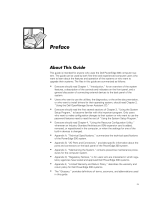
securely attached
to connectors.
Bad command or file
name
Command entered does not exist, is faulty,
or is not in pathname specified.
Faulty command and syntax, or incorrect
filename.
Bad error-correction
code(ECC)on disk
read
Diskette drive or hard-disk drive controller
detected uncorrectable read error.
Indicates a fatal error.
Faulty diskette/tape drive subsystem or hard-
disk drive subsystem (defective system
board).
Boot: Couldn't find
NTLDR
A nonbootable diskette formatted with
Windows NT was detected in the diskette
drive.
A nonbootable diskette is preventing the
system from booting. Remove the diskette
to boot the system from the hard-disk drive
or from a bootable diskette.
Controller has
failed
Hard-disk drive or associated controller is
defective. Indicates a fatal error.
Faulty hard-disk drive subsystem or
defective system board.
Data error
System received unrecoverable data-read
error from diskette or hard-disk drive.
Indicates a fatal error.
Faulty diskette, diskette drive, or hard-disk
drive.
Decreasing available
memory
Read/write failure during POST prevents
system from using available memory.
One or more DIMMs are faulty or
improperly seated.
Diskette drive 0
seek failure
Diskette drive 1
seek failure
Diskette/tape drive controller could not
locate specific sector or track.
Faulty or improperly inserted diskette,
incorrect settings in System Setup program,
loose diskette/tape drive interface cable, or
loose power cable.
Diskette read
failure
Failure occurred while system attempted to
read diskette.
Faulty diskette, faulty or improperly
connected diskette/tape drive interface
cable, or loose power cable.
Diskette subsystem
reset failed
System could not successfully issue reset
command to diskette controller.
Faulty diskette/tape drive controller
(defective system board).
Diskette write
protected
Diskette write-protect feature was
activated.
Diskette write-protected.
Drive not ready
Diskette is missing from or is improperly
inserted in diskette drive.
Missing, defective, unformatted, or
improperly inserted diskette.
ECC memory error
Uncorrectable multibit ECC memory error
is detected.
Faulty or improperly seated DIMMs or
defective system board.
Gate A20 failure
Gate A20 of the keyboard controller
malfunctioned. Indicates a fatal error.
Faulty keyboard controller (defective system
board).
General failure
Operating system cannot execute
command.
Corrupted or improperly installed operating
system.
Hard disk controller
failure
Hard disk drive read
failure
Hard-disk drive failed to initialize.
Indicates a fatal error.
Incorrect configuration settings in System
Setup program, improperly connected hard-
disk drive cable, faulty hard-disk controller
subsystem (defective system board), or
loose power cable.





















